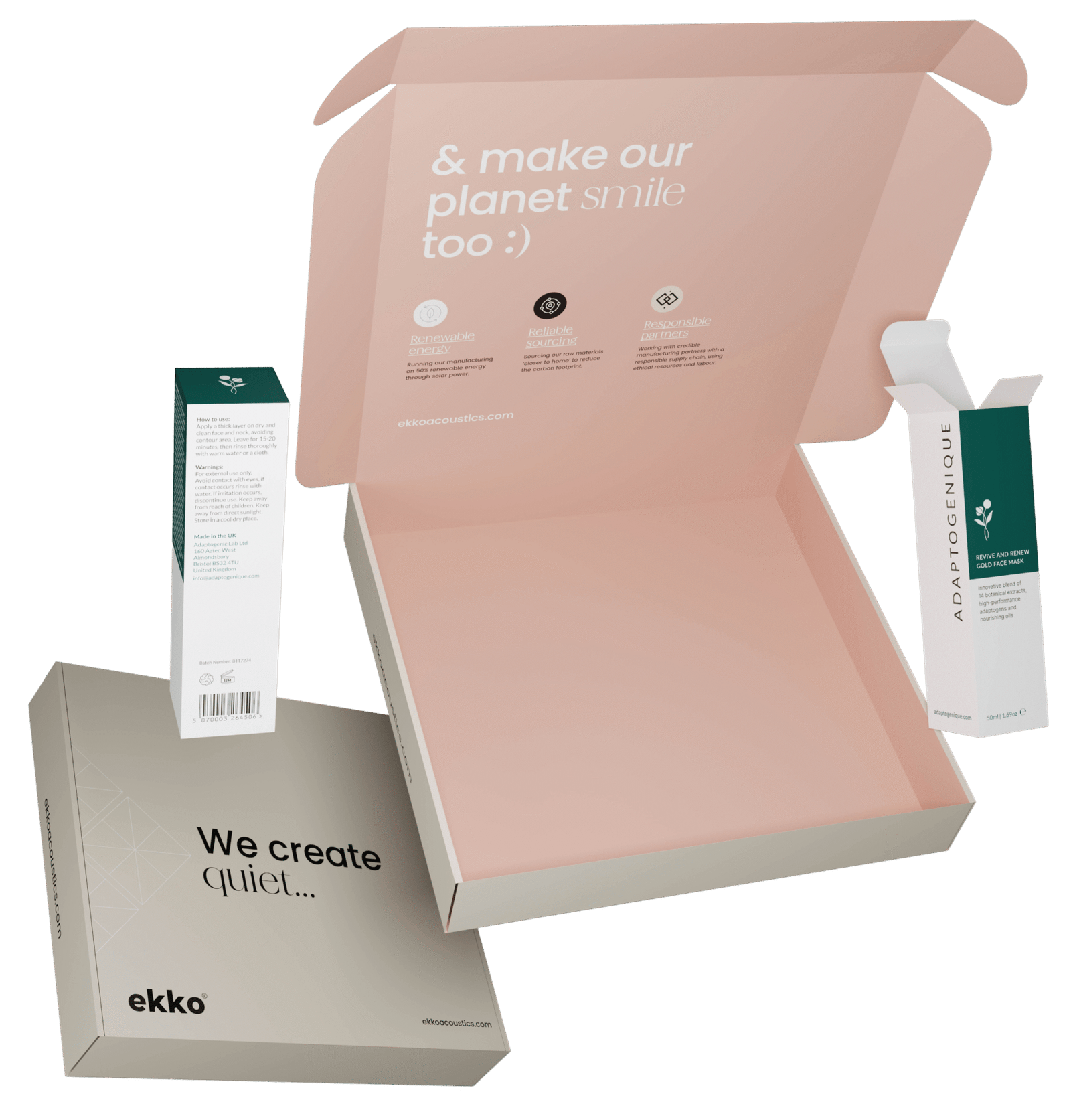Corrugated stock is a type of cardboard made up of three layers: an inside liner, an outside liner, and a fluted middle layer. The fluted layer provides added strength and durability, making it ideal for shipping boxes, product packaging, and point-of-purchase displays.
Kraft and White Corrugated Stock:
Kraft corrugated stock is made from the pulp of the Kraft process and has a natural brown colour. It’s strong, durable, and eco-friendly, making it ideal for shipping boxes and product packaging. White corrugated stock is coated with a layer of white clay or other materials, giving it a clean, polished appearance, and making it easier to print graphics and text. It’s ideal for branding and marketing purposes.
Types of Kraft Corrugated Cardboard:
– Single Face: This type of Kraft corrugated cardboard features one flat liner and one fluted layer. It’s often used for wrapping fragile items or as a protective layer between products.
– Single Wall: This type of Kraft corrugated cardboard features two flat liners and one fluted layer. It’s the most common type of corrugated cardboard and is used for shipping boxes, product packaging, and point-of-purchase displays.
– Double Wall: This type of Kraft corrugated cardboard features three flat liners and two fluted layers. It’s the strongest and most durable type of corrugated cardboard and is used for heavy-duty shipping boxes, large product packaging, and industrial applications.
White Corrugated Cardboard:
White corrugated cardboard is made from the same process as Kraft corrugated cardboard, but it’s coated with a layer of white clay or other materials to give it a clean, polished appearance. The white coating also makes it easier to print graphics and text onto the cardboard, making it ideal for branding and marketing purposes.
Types of White Corrugated Cardboard:
– White Single Face: This type of white corrugated cardboard features one flat liner and one fluted layer, with a white coating on one side. It’s often used for wrapping fragile items or as a protective layer between products.
– White Single Wall: This type of white corrugated cardboard features two flat liners and one fluted layer, with a white coating on one or both sides. It’s ideal for branding and marketing purposes, as well as for shipping boxes, product packaging, and point-of-purchase displays.
– White Double Wall: This type of white corrugated cardboard features three flat liners and two fluted layers, with a white coating on one or both sides. It’s the strongest and most durable type ofwhite corrugated cardboard and is used for heavy-duty shipping boxes, large product packaging
Different types of flutes and their strength index:
Here’s a brief explanation of the types of flutes available for corrugated stock and the weight they can bear:
– A-Flute: Strength index: Can bear up to 30 kgs (double wall corrugated)
This is the thickest type of flute and is ideal for protecting fragile items during shipping. It can withstand heavy weights and provides excellent cushioning and shock absorption.
– B-Flute: Strength index: Can bear up to 15-20 kgs
This is the most common type of flute and is ideal for shipping boxes, product packaging, and point�of-purchase displays. It provides good cushioning and is suitable for most applications.
– C-Flute: Strength index: Can bear up to 10-15 kgs
This is a slightly thinner flute than B-Flute and is ideal for shipping boxes, product packaging, and point-of-purchase displays. It provides good cushioning and is suitable for most applications.
– E-Flute: Strength Index: Can bear up to 1-5 Kgs
This is the thinnest type of flute and is ideal for printing high-quality graphics and text onto corrugated stock. It provides good cushioning and is suitable for most applications. The weight that each flute can bear depends on various factors, such as the size of the box, the type
of product being shipped, and the shipping method. In general, A-Flute can bear the most weight, followed by B-Flute, C-Flute, and E-Flute

